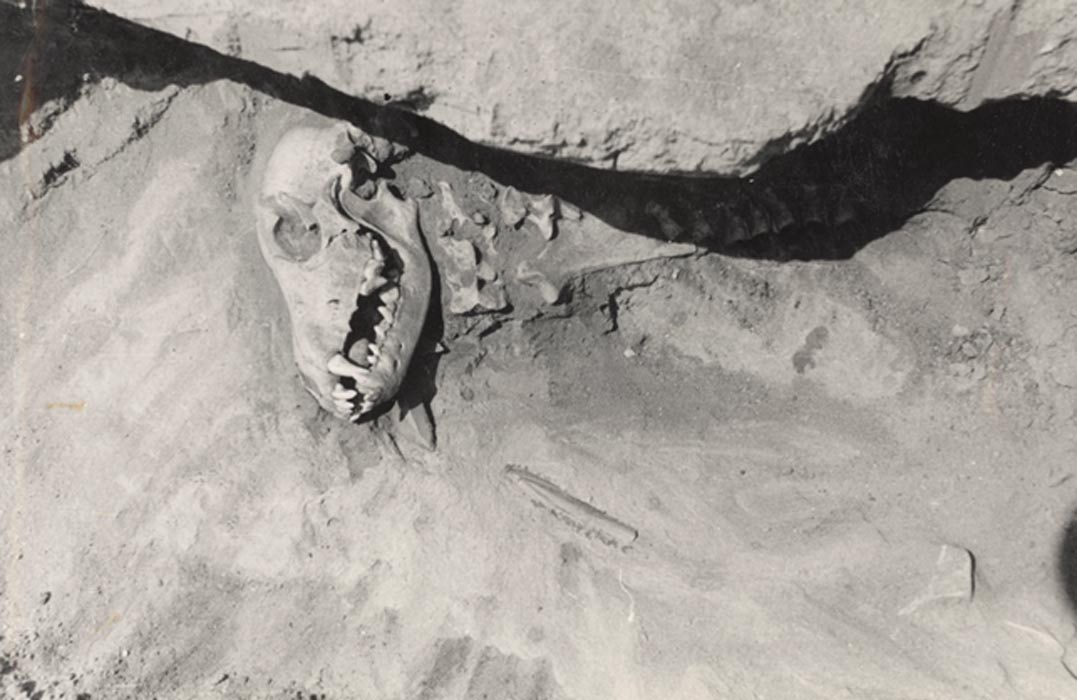2,000-Year-Old Dog Burials in Siberia Reveal Relationship Between Ancient People and Their Pets
Archaeologists have uncovered the 2,000-year-old remains of five dogs, which had been carefully buried in a pit near the Arctic Circle in Siberia. It is believed that the dogs served as pets, workers and sources of meat, but may also have been sacrificial offerings in religious ceremonies. According to LiveScience, the graveyard reveals the close relationship between the region's people and their animal "best friends" two millennia ago.
The discovery took a place at the Ust-Polui archaeological site in Salekhard, Russia. Robert Losey, an archaeologist at the University of Alberta in Canada, said: "The role of dogs at Ust-Polui is really complex and variable. The most striking thing is that the dog remains are really abundant compared to all other sites in the Arctic — there are over 115 dogs represented at the site. Typically, sites have only a few dog remains — 10 at most."
Analyses of the bones revealed that the dogs were similar to Siberian huskies, but a bit smaller, weighing less than 22 kg (50lbs).
Among the 115 dogs already discovered in the region of Ust-Polui, many of the bones displayed cut marks, suggesting they had been butchered and eaten, and were scattered around the site in the same way as bones of other food animals like birds and deer. However, some of the dog consumption may have been related to the rituals, feasting and sacrifices. According to Losey, this seems to be confirmed by the discovery of the heads of 15 dogs, which were piled together. All of them had their brain cases broken open in the same way. The history of dog sacrificing in Siberia has already been well documented.

This dog was buried in a crouched or sitting position. Credit: Losey et al. (2013)
However, the recent discovery of five dogs differs from the previous findings. They had been buried carefully in a group near the edge of the site. Their skeletons were whole and had been placed in a shallow pit. The dogs had been laid on their sides and there were no signs that the dogs were intentionally killed or butchered.
In ancient Arctic villages, dogs were known to have been used for various tasks like pulling sleds, as evidenced by the discovery of two sleds and two carved bone knife handles thought to depict a sled dog in a harness. It seems that some of the animals were also used for the hunting of birds and reindeer. To this day, dogs are used by communities in the area of Ust-Polui to herd reindeer.

Just below the dog were the cranium, mandible and lower leg bones of a calf. These calf remains may have been left attached to the hide and used to wrap the dog, which appears to have been a sacrificed animal. Credit: Losey et al. (2013)
The initial discoveries at the site appeared for the first time in the journal PLOS ONE, where in 2013 Losey published the results of his research related to the dog burials, which were dated to around 8,000 years ago. The burials of the dogs contained decorated collars and some grave goods like pottery and wooden spoons.
According to Losey the major differences between the two findings reveals how the relationship between people and dogs has changed over the millennia – the older burials showed that dogs had been used as food, even though they were also utilized for hunting and working, while the more recent burials showed no evidence of meat consumption. By this stage, it appears people had a closer relationship to their pets and did not want to use them as food.
Top image: Dog burial in Siberia. Stone and bone implements are present near and under the cranium, and a round pebble is visible within the mouth. Credit: Losey et al. (2013)


















